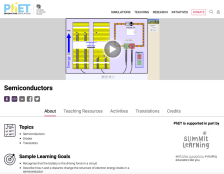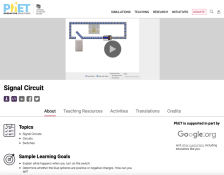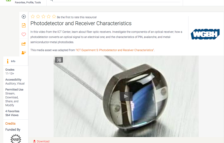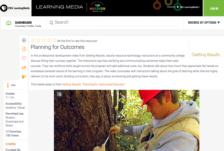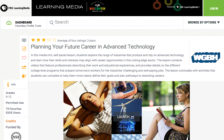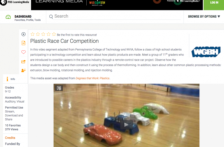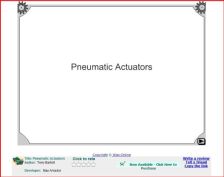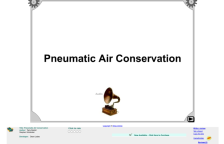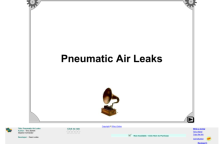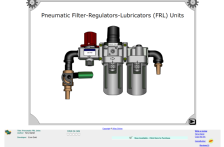Browse Resources
Application -- Flash
Resources |
|---|
The interactive resource, presented by the University of Colorado, Boulder, presents a demonstration how a doped semiconductor to create a diode or transistor. Watch the electrons change position and energy. This interactive simulation has a teacher's guide and an ideas and activities section.
Why do the lights turn on in a room as soon as you flip a switch? Flip the switch and electrons slowly creep along a wire. The light turns on when the signal reaches it. This simulation of a Signal Circuit is from the Physics Education Technology website of University of Colorado. Included are links...
In this video from the ICT Center, learn about fiber optic receivers. Investigate the components of an optical receiver; how a photodetector converts an optical signal to an electrical one; and the characteristics of PIN, avalanche, and metal-semiconductor-metal photodiodes. The video runs 2:07 and...
In this professional development video from Getting Results, natural resource technology instructors at a community college discuss fitting their courses together. The instructors say that clarifying and communicating outcomes helps them plan courses. They can reinforce skills taught across the...
In this media-rich, self-paced lesson, students explore the range of industries that produce and rely on advanced technology and learn how their skills and interests may align with career opportunities in this cutting-edge sector. The lesson contains videos that feature professionals describing...
This video, presented by WGBH, looks at a high school outreach program to get students interested in plastic manufacturing by having them make plastic race cars. The students go through the entire process of design from both technical and hands-on perspectives. This video also serves as an overview...
This learning object covers cylinders and motor pneumatic actuators. It is hosted by the University of Wisconsin-Madison and consists of cylinders operations such as: single, duel acting, factors for cylinder speed. The program require Macromedia Flash player, and presents a very nice overall...
This brief interactive activity, by Electromechanical Digital Library and Wisconsin Technical College System faculty members Terry Bartelt and Stephen Schneider, introduces pneumatic air conservation. The lesson begins with an illustration comparing production of air force by electric and pneumatic...
This brief interactive activity, by Electromechanical Digital Library and Wisconsin Technical College System faculty members Terry Bartelt and Stephen Schneider, introduces air leaks in pneumatic systems. The lesson, full of illustrations and animations, walks students through the cost and cause of...
This interactive lesson, by Electromechanical Digital Library and Wisconsin Technical College System faculty member Terry Bartelt, discusses the three types of air preparation processes for pneumatic systems: filtering, regulating, and lubricating. Each method is discussed in detail, with...
|
| ← PreviousNext → |
